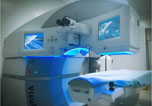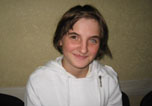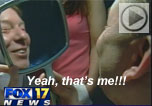- Over 55,000 LASIK and cataract procedures (including on over 4,000 doctors)
- The FIRST center in TN to offer Laser Cataract Surgery
- Introduced bladeless all-laser LASIK to the state
- Implanted the state's first FOREVER YOUNG™ Lens
- The first surgeons in the US to perform a new Intacs surgery to treat keratoconus
- Helped patients from 40 states and 55 countries
- International referral center for cataract surgery and LASIK complications
- Read Dr. Wang's book: LASIK Vision Correction
Why did you decide to have LASIK? Why did you choose Dr. Wang? How has your life changed since your LASIK procedure?
What is your advice for people considering LASIK?
Click to read more
Chapter TwoHow the Eye WorksI n order for you to fully understand how refractive surgery works, you need to understand how your eye works. This basic knowledge will help you determine if LASIK is right for you. The primary purpose of your eye is to focus light. When the rays of light are not focused properly, you need glasses or contact lenses. Your eye works very much like a camera. Light enters the eye through the cornea, the clear front surface or "window" of the eye. As the light passes through the cornea, it is bent or refracted. This bent light then travels through the pupil and into the lens. The lens acts to fine tune the focus of light onto the retina. The retina turns the light energy into electrical impulses that travel along the optic nerve from the eye to the brain, where the image is interpreted. On the following pages is a series of pictures and short descriptions of the various parts of the eye that will help you understand the vision process, why vision is sometimes blurry, and how these vision disorders can be corrected.  Diagram of anatomy of the eye  Normal eyesight is present when light rays strike the retina, causing a clear image to form Sclera The sclera is the support layer of the eye. It is the white part of the eye that you see in the mirror and provides structure and protection for the eye. Cornea The cornea is the front-most surface of the eye, like the crystal of a watch. It provides most of the eye's focusing power. Most of the refracting (bending) of light is achieved by the cornea, so small changes in the surface of the cornea can have a large effect on how your eye focuses light. Iris The iris is the colored part of the eye. The muscles of the iris act to control the size of the pupil. Pupil The pupil is the black spot in the center of the iris. The pupil acts to regulate the amount of light that enters the eye. In bright sunlight it becomes small to let in less light. In a dark environment the pupil expands to allow more light to reach the retina. Lens The lens is a normally clear structure located behind the pupil. It acts to fine tune the focusing. By changing shape, the lens allows us to focus near and far. This ability to focus near (accommodation) gradually worsens with age as the lens gets harder and less supple. Most people notice this in their early forties, at which time they begin to need reading glasses or bifocals. In people over sixty, the lens may become cloudy. This clouding of the lens is called a cataract and may interfere with your vision. Vitreous This is the clear gel substance that fills the space between the lens and the retina. If there are opacities in the vitreous, you will see them as "floaters." Retina The retina is the thin layer of tissue that lines the inside wall of the eye. It is very similar to film in a camera in that it functions to capture and transmit images for interpretation to the brain. Optic Nerve The optic nerve carries the images from the retina to the brain. Refractive Errors Refractive errors (visual problems) refer to disorders that are related to how your eye focuses light. The word refraction is used to describe the way light is bent by your eye. The factors that influence how your eye refracts (bends) rays of light are the curvature of your cornea, the power of your lens, and the length of your eye.  In myopia (nearsightedness), rays of light focus in front of the retina instead of upon it, causing distant objects to appear blurred Myopia (nearsightedness) Myopia occurs when the curvature of the cornea is too steep for the length of the eye or the eye is functionally too long. As the light rays pass through the steep cornea, they are bent too sharply and come to a point of focus in front of the retina. This creates a blurred image. Patients with myopia are able to see near objects well but have difficulty with their distance vision. Hyperopia (farsightedness) Hyperopia occurs when the eye is functionally too short or the curvature of the cornea is effectively too flat. The light rays that enter the eye are not bent sharply enough, causing them to come to a point of focus behind the retina. This produces a blurred image. Farsightedness means distant objects are seen more clearly than near objects. Although farsighted patients see distant objects more clearly than near objects, they often have difficulty with both, especially as they get older.  In hyperopia (farsightedness), rays of light focus behind the retina. Some younger people who are mildly farsighted are able to use the focusing muscle around their lens (accommodation) to bend the light more steeply. This brings the point of focus forward toward the retina and allows them to see more clearly. However, this ability decreases with age, so that reading glasses are needed at an earlier age than normal, and bifocals may also be needed to see at a distance. Farsightedness is often confused with presbyopia. Presbyopia is the age-dependent need for reading glasses. Even people who never wore glasses before find that they start needing reading glasses in their forties and fifties. This is because the up-close focusing ability of the natural lens is progressively lost with age. This occurs with everybody. At first they just need them for seeing things up close (presbyopia). Farsighted people, in whom the cornea is truly too flat for the length of the eye, require the natural lens to supply the additional focus for both near and distance vision. Therefore, many farsighted individuals as they age not only lose their near vision, they lose their far vision as well and become totally dependent on their glasses or contact lenses. This phenomenon is called latent hyperopia. Astigmatism Many patients with myopia or hyperopia have some degree of astigmatism. This means that your cornea, rather than being completely spherical like a basketball, is slightly oval and shaped more like half a football. People with astigmatism experience blurred vision and sometimes distortion of images due to unequal bending of the rays of light entering their eyes. High degrees of astigmatism will cause blurred vision for both distant and near objects.  In astigmatism, light entering the eye focuses in multiple areas rather than in one location Almost everyone has at least a small amount of astigmatism. For many people, their astigmatism has very little effect on their vision. Unfortunately, the word "astigmatism" is one of those magic words in the English language that almost everyone remembers and is frequently concerned about. For some, it is like being told that they have cancer or diabetes. The good news is that almost everyone with significant astigmatism can dramatically improve their vision using refractive surgery to measurably reduce the amount of astigmatism. Presbyopia Presbyopia is a normal aging process. It occurs as the protein composition of the lens changes, making it harder and less flexible. As the lens loses its ability to flex, it can no longer bend light rays as sharply, and the ability to focus on near objects is impaired. The onset of presbyopia typically occurs between age forty and fifty and continues to worsen through age sixty-five. When this occurs, people who already wear glasses may need bifocals, and those who have never worn glasses may require reading glasses. Presbyopia is an important concept to understand. The excimer laser has no effect on your eye's focusing muscles or on the lens, so it cannot treat pure presbyopia. Thus, if you only need glasses for reading, refractive surgery usually is not likely to help you unless you choose to have surgical correction for monovision (mentioned on the following page). Additionally, if you are mildly nearsighted and in your forties, you may notice that while you cannot read clearly with your glasses or contact lenses on, you can read well without them. One advantage of mild myopia is the ability to remove your glasses after presbyopia sets in and still be able to read. If you are myopic and obtain excellent distance vision after undergoing laser vision correction, you will typically become normal sighted. This means that you will lose the ability to read without glasses once presbyopia begins. Like other normal sighted individuals, you will require reading glasses for small print, generally sometime in your forties. One way to counteract this effect is to keep one eye slightly nearsighted after LASIK. If you are farsighted, your surgeon could overcorrect one eye and make it slightly nearsighted. Your body will automatically use this eye for reading and the fully corrected eye for distance. This is called monovision or blended vision. You may want to discuss this possibility with your doctor. Laser vision correction designed for monovision should be reserved for those individuals who are already accustomed to and comfortable with monovision utilizing contact lenses. Measurement of Refractive Errors You may hear your vision referred to as 20/20 or 20/40 or even 20/400. This is a measurement of your visual acuity using a Snellen chart. The notation 20/40 means you can see at twenty feet what a normal sighted person sees at forty feet. These numbers measure your vision but do not quantify your refractive error. There are other variables that affect an interpretation of the chart, such as squinting, guessing at the letters, and room light. Quantifying your refractive error is done in diopters. This is the number used to determine your refractive treatment. The more nearsighted or farsighted you are, the higher your prescription is in diopters. Your prescription for glasses may be written in three numbers. Let's take the prescription -4.00 -1.50 X 90 The first number (-4.00) identifies your degree of nearsightedness or farsightedness. The sign is an indication of whether you are nearsighted (-) or farsighted (+). The second number (-1.50) represents your degree of astigmatism. This can be written as either + or -. The third number (90) represents where the astigmatism lies. In this person the astigmatism is at ninety degrees or vertical. When your ophthalmologist corrects your refractive disorder, he uses this prescription to determine the treatment. Your prescription (measured in diopters) forms the basis for the number entered into the computer that controls the excimer laser. This number determines how much and in what pattern the laser removes tissue from the cornea. The amount of tissue removed is usually no more than ten percent of the total thickness of the cornea. Nonsurgical Vision Correction Options Before considering laser vision correction, you should review the variety of different nonsurgical ways refractive disorders can be corrected. All have benefits and drawbacks. Glasses Glasses are time proven and have been in existence for a thousand years. They are affordable (unless you buy multiple pairs of designer frames), easy to maintain, and versatile. They may, however, restrict peripheral vision, be difficult to wear in certain weather conditions, cause minification of images, cause a number of visual aberrations (including halos around lights), and have a limited usage life. They may interfere with certain occupations and recreational activities, and some people don't like their cosmetic impact on their appearance. Contact Lenses Contact lenses are another common solution for the correction of refractive visual problems. Advantages include more natural vision, no change in cosmetic appearance, improved visibility, more freedom in recreational activities, and better peripheral vision. On the other hand, contacts are high maintenance, may get lost, are less comfortable for patients with dry eyes, may cause visual aberrations (including halos and fluctuating vision), and always carry an increased risk of infection and possible corneal scarring. In higher altitudes many adults become intolerant of contact lenses over time because of dry climate and decreased oxygen in the air. There are so many types of contact lenses available today that the vast majority of people may be fit comfortably, regardless of their level of nearsightedness, farsightedness, or astigmatism. Orthokeratology This is a technique that uses a series of rigid contact lenses to flatten your cornea to treat myopia. The effects are not permanent and require continued dependence on part-time retainer lenses. The technique is high maintenance and requires continuous follow-up visits. The long-term effects may also lead to permanently warped corneas. The risk of keratitis or infection is also considerably increased over normal contact lens wear. |
If you're interested in bladelessLASIK, choose experience and technology. Choose Wang Vision 3D Cataract and LASIK Center of Nashville, Tennessee. Call (615)321-8881 or email us today.
Our new texbooks
A 501c(3) charity that has helped patients from over 40 states in the US and 55 countries, with all sight restoration surgeries performed free-of-charge.




















